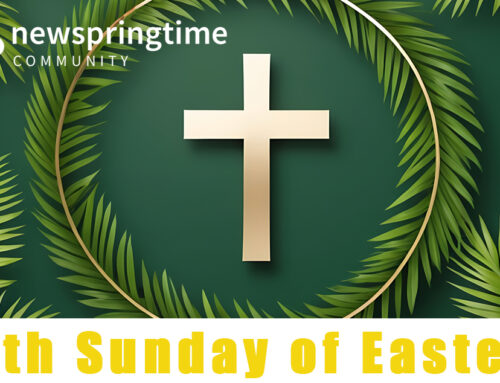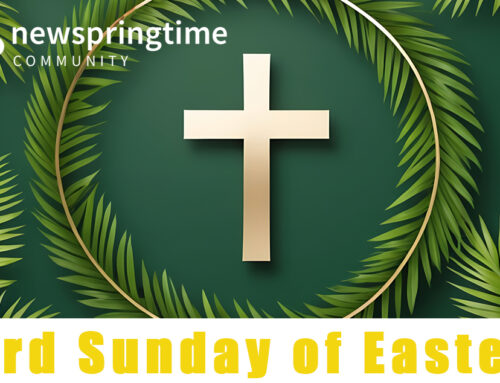The Catechism of the Catholic Church – Course Notes – Wednesday 13th September 2023
To download The Catechism of the Catholic Church course notes for 13th Sept 2023, please click here
Commentary Week 1 pars. 1-8.
Talking about the plan of God for human beings, par. 2 of the Conciliar Decree on The Church’s Missionary Activity says that the friendship love between the divine persons in the Blessed Trinity is like “a fountain of love” which spills over in the creation of the universe and human beings. In other words, superabundant Trinitarian love is creative, generative and nurturing. As the Dogmatic Constitution on The Church tells us, “The eternal Father, by a free and hidden plan of His own wisdom and goodness, created the whole world. His plan was to raise men to a participation of the divine life.”
Why do people have a desire for God? We know from observation that many animals have amazing homing instincts. They can migrate long distances and to return to their home breeding grounds: sandhill cranes annually to a small pond in Alaska after overwintering in Mexico, albatrosses to a speck of land in the middle of the ocean to breed after being away for years at a stretch, or salmon to their natal stream. For their part human beings have an inbuilt need to seek and know God. This propensity has been evident in people at all times in all cultures. Well known American sociologist Talcott Parsons observed, “there is no known human society without something which modern social scientists would classify as religion.” St Augustine gave expression to the human yearning for relationship with God when he wrote in his Confessions, “Because you have made us for Yourself, and our hearts are restless till they find their rest in You.”
How is it possible to know God with only the light of human reason? When we are with our human friends we can see, hear, and touch them. But our relationship with God is different. The Lord is pure Spirit and cannot be directly perceived by the human senses.
So how can the Lord, reveal the Godself to us? Clearly, a principle of mediation is needed. We can only encounter God indirectly through created things. In Rom 1:20 St Paul articulated this point of view when he stated: “Since the creation of the world God’s invisible qualities – his eternal power and divine nature – have been clearly seen, being understood from what has been made.” St Thomas Aquinas, the greatest theologian of the medieval era, stated in his Summa Theologica: “Our natural knowledge begins from sense. Hence our natural knowledge can go as far as it can be led by sensible things… The nature of man requires that he be led to the invisible by visible things. Therefore, the invisible things of God must be made manifest to man by the things that are visible.” Speaking about the mediating power of the natural world a hymn in the Divine Office says: “The Father gives his children the wonder of the world in which his power and glory like banners are unfurled.” Speaking about the way in which contact with people can mediate God’s presence Jesuit poet Gerald Manley Hopkins wrote: “For Christ plays in ten thousand places, lovely in limbs, and lovely in eyes not his to the Father through the features of men’s faces.”
Is the light of reason alone sufficient to know the mystery of God? The truth is that while reason can come to know about the existence and some of the attributes of God the divine mystery remains hidden unless God reveals it. Almighty God can does reveal what would otherwise be incomprehensible. As we read in the Dogmatic Constitution on Divine Revelation (Dei Verbum): “since everything asserted by the inspired authors or sacred writers must be held to be asserted by the Holy Spirit, it follows that the books of Scripture must be acknowledged as teaching solidly, faithfully and without error that truth which God wanted to be put into sacred writings for the sake of salvation. Therefore ‘all Scripture is divinely inspired and has its use for teaching the truth and refuting error’ (2 Tim 3:16-17). That Truth came to its point of highest revelation in the person of Jesus Christ, who is the truth incarnate.
How can we speak about God? Like Jesus himself, we can use images and stories to speak about the mystery of God, we have to acknowledge, that the mystery of God is ultimately beyond words and images. The Fourth Lateran Council (1215), said, ‘Between Creator and creature no similitude can be expressed without implying an even greater dissimilitude.’





